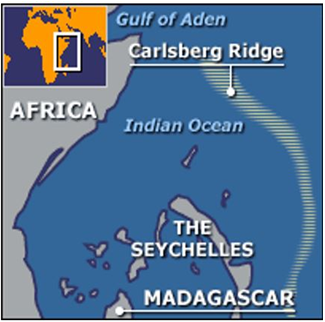

20th September 2025 (16 Topics)
Context:
India has secured its first-ever licence from the International Seabed Authority (ISA) to explore polymetallic sulphide nodules in the Carlsberg Ridge of the northwest Indian Ocean.
About Polymetallic Nodules
- Nodules are rock concretions on the seabed rich in manganese, cobalt, nickel, and copper.
- These metals are critical for high-tech industries, renewable energy technologies, and strategic applications.
- Exploration of these nodules is part of the blue economy and marine mineral resources
Geographical Significance
- Carlsberg Ridge: ~3,00,000 sq.km, located in the Arabian Sea and northwest Indian Ocean.
- Forms the boundary between Indian and Arabian tectonic plates, extending from Rodrigues Island to the Owen Fracture Zone.
- Other areas of interest include the Afanasy-Nikitin Sea (ANS) mount in the Central Indian Ocean.

Legal and Strategic Framework
- Deep-sea areas beyond national jurisdiction (high seas) are regulated by the International Seabed Authority (ISA) under UNCLOS.
- Countries can claim up to 350 nautical miles (continental shelf), and in some Bay of Bengal cases, up to 500 nautical miles.
- India has previously obtained ISA exploratory rights:
- Central Indian Ocean Basin (2002–2027)
- Polymetallic sulphides in Indian Ocean Ridge (2016–2031)
Strategic Implications for India
- Strengthens India’s position in the global marine mineral resources arena.
- Supports technological advancement and strategic mineral security.
- Enhances India’s role in international governance of oceans and blue economy initiatives.
More Articles

